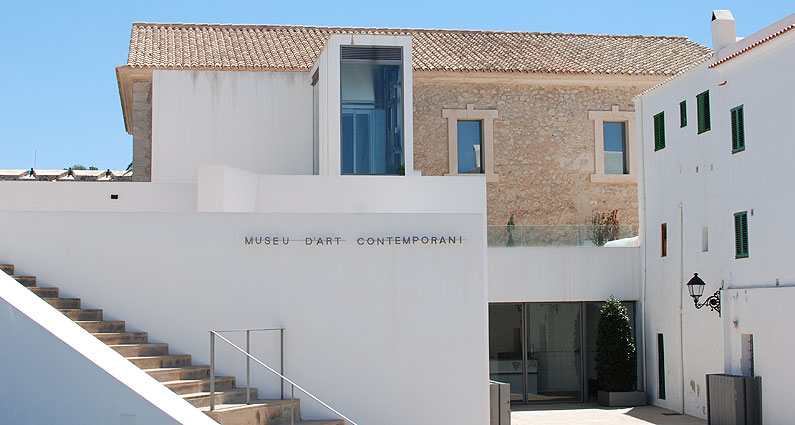The building
The historic building is a building designed by the military engineer Simon Poulet, plans which was signed in 1727 and it makes using the old bunker halfed-bury the embankment Bastion of St. John, built by Jacopo Paleazzo “The Fratín” to the late sixteenth century.
The building consists of floors, downstairs powder room and later intended to stables and the upper floor aimed at armory. The whole building is a huge sobriety, very rational in the use of resources, predominantly tall and thick walls of their rooms. The old building will be the main container of the permanent collection and temporary exhibitions
THE RENOVATION OF THE BUILDING
The arbitrated solution for the architect of the project and director of the work, Victor Beltran Roca analyzes seriously the planning in the area and it is at the filling of the Bastion the optimal possibility to make room for the museum’s needs without overwhelming the urban landscape with new volumes.
Therefore the appendix, is a building that grows down instead of doing it in high overhead and it takes advantage of natural light. The meeting between the old and new buildings is orchestrated wisely and without harm to one on another and the audience immediately distinguish them from outside. Once inside the two spaces are connected through content, exhibitions and services, the light, the floor and the solution found by the walls.
Link to:
· Floor plan levels -1 & -2
· Floor plan levels 0 & 1
· Floor plan levels 2 & roof
THE ARCHAEOLOGICAL SITE OF THE MACE
The archaeological site preserved under the ground -2 floor of the museum includes items of different historical periods, the oldest buildings, with a timeline that is around the sixth century BC, are the homes of the Phoenician city. These structures, over the centuries, underwent several reforms and adaptations, the most obvious relate to the Punic period (IV-II centuries BC), and subsequently it has also been documented usage levels and structures of high imperial Roman chronology (I DC century). Finally, covering the entire industry were localized layers of neglect and arrassament of late antique period and the Lower Empire (V-VI centuries DC), during which time it detects a drop in the city. The last stages of the documented archaeological levels are burials from the Islamic period, the timing of which is in the X-XII centuries.

